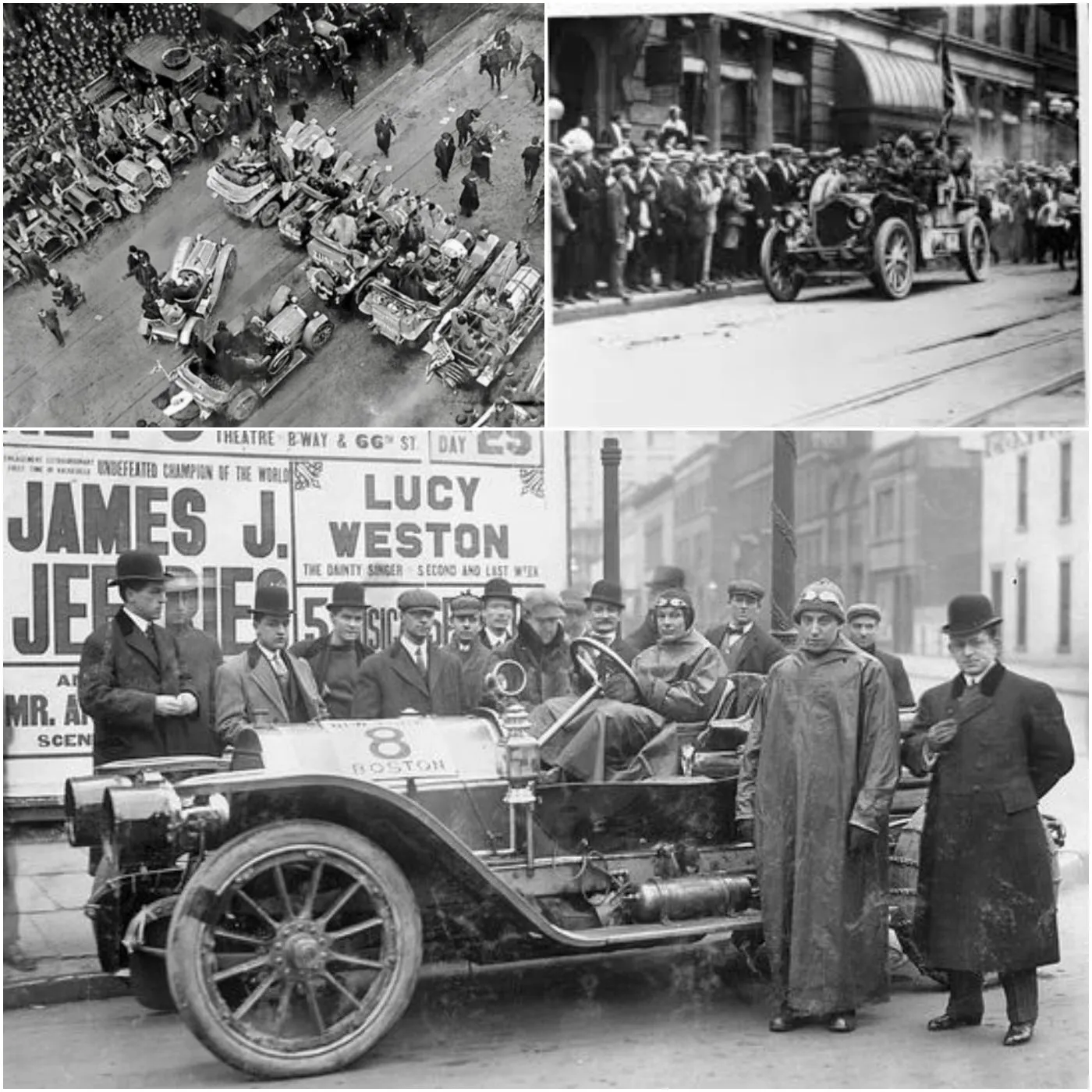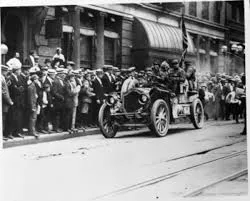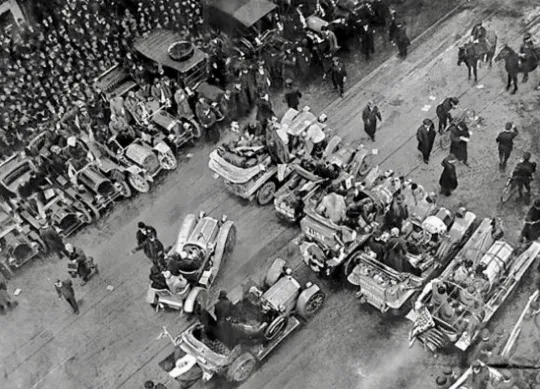he Greatest Car Race Ever: New York to Paris in 1908.

In 1908, a monumental event took place that would go down in history as the greatest car race ever: the New York to Paris race. This epic journey tested the limits of human endurance, engineering, and the pioneering spirit of the early 20th century. Spanning three continents and over 22,000 miles, this race was not just a competition, but a testament to the advent of automotive technology and the spirit of adventure.
The New York to Paris race began on February 12, 1908, with six teams from four countries: the United States, Germany, France, and Italy. The starting point was Times Square in New York City, and the route would take the competitors across North America, through Asia, and finally into Europe, ending in Paris. The race was organized by the New York Times and the French newspaper Le Matin, aiming to showcase the potential of automobiles and the global reach of emerging transportation technologies.

The journey was fraught with challenges that tested both the drivers and their vehicles. Participants faced extreme weather conditions, treacherous terrain, and mechanical failures. The race required not just driving skills, but also ingenuity and resourcefulness. In the United States, teams had to navigate the snowy plains and muddy roads, while in Siberia, they confronted the vast, frozen wilderness with temperatures plunging below freezing.
The American team drove a Thomas Flyer, a sturdy and reliable vehicle that proved to be up to the task. The German team entered a Protos, known for its advanced engineering, while the French teams competed in De Dion-Bouton and Motobloc cars. The Italian team drove an Itala, a car that combined speed with durability. Each vehicle had its strengths and weaknesses, and the race highlighted the innovations and limitations of early 20th-century automotive engineering.
After 169 grueling days, the American team in the Thomas Flyer, led by driver George Schuster, emerged victorious. They arrived in Paris on July 30, 1908, securing their place in history. The victory was not just a testament to the resilience of the team, but also to the robustness of the Thomas Flyer. The Germans, despite arriving first in Paris, were penalized for not completing the entire route, thus securing the win for the Americans.
The New York to Paris race of 1908 left an indelible mark on the world of automotive racing and exploration. It demonstrated the feasibility of long-distance automobile travel and spurred interest in automotive technology. The race also highlighted the importance of international cooperation and competition, setting the stage for future global sporting events.

The 1908 New York to Paris race remains one of the most extraordinary feats in the history of motorsport. It showcased the early potential of the automobile and the adventurous spirit of the era. As we look back on this historic event, we celebrate the pioneers who pushed the boundaries of what was possible and paved the way for the future of automotive travel.
For more intriguing stories about the history of automobiles and the latest in automotive technology, follow our blog and social media channels.


 HAMILTON SNAPS LIVE and ACCUSES the FIA of STEALING FERRARI with ABSURD DECISIONS!
HAMILTON SNAPS LIVE and ACCUSES the FIA of STEALING FERRARI with ABSURD DECISIONS!
 : George Russell STIRS UP THE RACING by accusing Max Verstappen of foul play – FIA OFFICIALLY INVESTIGATES!
: George Russell STIRS UP THE RACING by accusing Max Verstappen of foul play – FIA OFFICIALLY INVESTIGATES!


